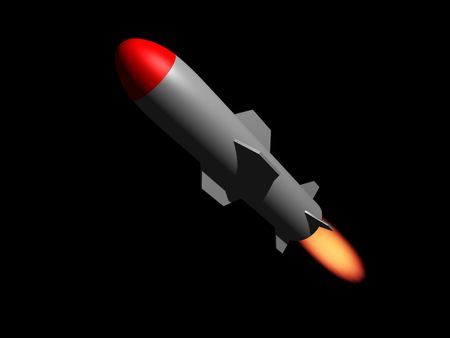Pilgrim I
---------------------------
Pilgrim I is part one of a two stage rocket launch to explore the outer solar system, kuiper belt, and oort cloud. It was originally manufactured by Boeing and we purchased it. it is capable of launch and reuse over 10 times Pilgrim I is set to launch with NASA's 2024 moon mission. The second stage of the mission is going to mine astroids in the astroid belt and bring them back to earth to fund future missions.
Pilgrim I can hold a payload of five tons of any materiel in the holding bay, it can also hold up to 30 humans with escape pods in case of emergency. The lower half of the spacecraft will detach when in low earth orbit, the fuel tank will detach 10 minutes after the rocket orbits around the earth. From there the crew module and the storage chamber will be slingshoted around the earth and towards the outer solar system. It will refuel once at the astroid belt using mined coal and oil, and then it will travel for 10 years to the outer solar system and will gather data about the kupier belt. Finally the rocket will refuel and spend 11 years on its way back to earth.

Pilgrim II
---------------------------
The second stage part of the Pilgrim mission is called Pilgrim II. Its job is to be a unmanned spacecraft that will go past Pilgrim I in an attempt to be a permanent outpost to gain insight on the outer solar system as a detection system to find out when a big astroid or commet leaves the kuiper belt. The same type of rocket the ASA Pilgrim Series of rocket is also expecially designed to be able to connect to the Internation Space Station.
The Pilgrim II rocket is the biggest rocket ever invented and it excedes NASA's Satern V's rocket size by 5000 feet. The rocket unlike the Pilgrim I is a single use rocket that carries one satilite bigger that the Hubble Space Telescope and Skylab combined. The Satilite is equipt to mine nearby astroids and commets and can run for over a century on the fuel from the outer solar system. The satilite also automaticaly assembles itself using every part of the rocket.

Sagittarius
---------------------------
Sagittarius is a mission similar to the Voyager missions from NASA but Sagittarius is a whole rocket dedicated to being launched into space for aliens to find, it has a storage unit that can fit 30 Voyager satellites and a new microwave recever and transmitter that can send data from long distances thanks to T-Mobile for letting us use their 5G microwave technology. What are we putting on the rocket, we are putting thousands of small hard drives that are all linked to a central computer in the center of the rocket. Alien's will always be able to access the files which are every word in every language ever invented and sounds in diffrent frequencies. Also many 100 hour recordings of animal sounds such as whale mating calls and hyhena laughs.
Sagittarius is made of a super long lasting titanium shell and the storage unit is coated with 50cm thick gold plates to protect the computer and the drives. The computer is the appropriate type to be lauched into space, named alienware threadripper the PC is the way that aliens will be able to view our photos and videos. The speakers of the storage unit are 10D suround sound JBL speakers so aliens will be able to experence life on Earth in a natural way.

